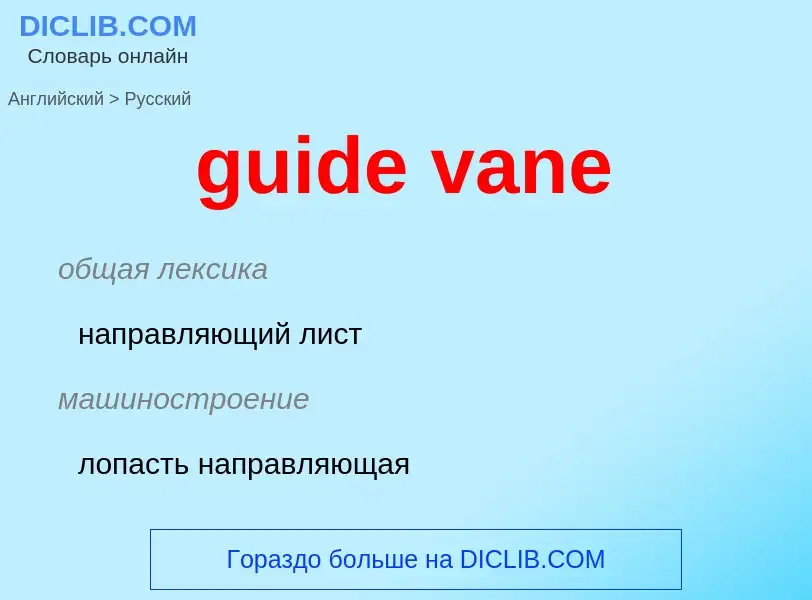Traducción y análisis de palabras por inteligencia artificial
En esta página puede obtener un análisis detallado de una palabra o frase, producido utilizando la mejor tecnología de inteligencia artificial hasta la fecha:
- cómo se usa la palabra
- frecuencia de uso
- se utiliza con más frecuencia en el habla oral o escrita
- opciones de traducción
- ejemplos de uso (varias frases con traducción)
- etimología
guide vane - traducción al ruso
общая лексика
направляющий лист
машиностроение
лопасть направляющая
строительное дело
направляющая лопатка
множественное число
направляющий аппарат на входе в вентилятор
блок направляющих перегородок (в воздуховоде)
Definición
Wikipedia

A turbine ( or ) (from the Greek τύρβη, tyrbē, or Latin turbo, meaning vortex) is a rotary mechanical device that extracts energy from a fluid flow and converts it into useful work. The work produced can be used for generating electrical power when combined with a generator. A turbine is a turbomachine with at least one moving part called a rotor assembly, which is a shaft or drum with blades attached. Moving fluid acts on the blades so that they move and impart rotational energy to the rotor. Early turbine examples are windmills and waterwheels.
Gas, steam, and water turbines have a casing around the blades that contains and controls the working fluid. Credit for invention of the steam turbine is given both to Anglo-Irish engineer Sir Charles Parsons (1854–1931) for invention of the reaction turbine, and to Swedish engineer Gustaf de Laval (1845–1913) for invention of the impulse turbine. Modern steam turbines frequently employ both reaction and impulse in the same unit, typically varying the degree of reaction and impulse from the blade root to its periphery. Hero of Alexandria demonstrated the turbine principle in an aeolipile in the first century AD and Vitruvius mentioned them around 70 BC.
The word "turbine" was coined in 1822 by the French mining engineer Claude Burdin from the Greek τύρβη, tyrbē, meaning "vortex" or "whirling", in a memo, "Des turbines hydrauliques ou machines rotatoires à grande vitesse", which he submitted to the Académie royale des sciences in Paris. Benoit Fourneyron, a former student of Claude Burdin, built the first practical water turbine.



![Turbine inlet guide vanes of a [[turbojet]] Turbine inlet guide vanes of a [[turbojet]]](https://commons.wikimedia.org/wiki/Special:FilePath/Turbine inlet guide vanes of Atar turbojet.jpg?width=200)
